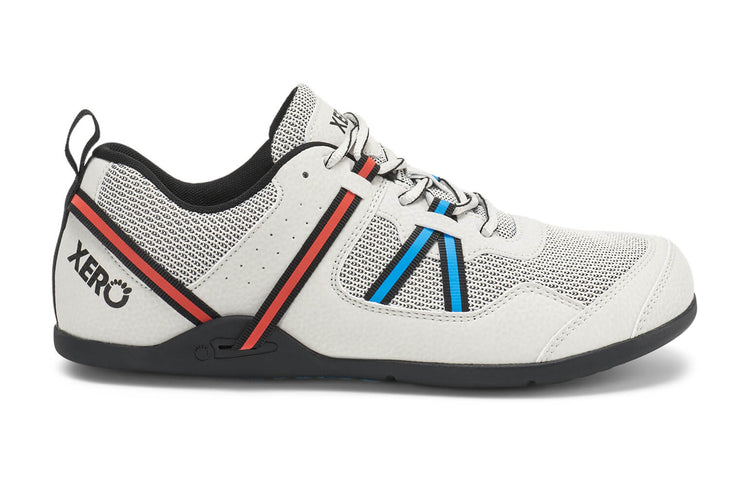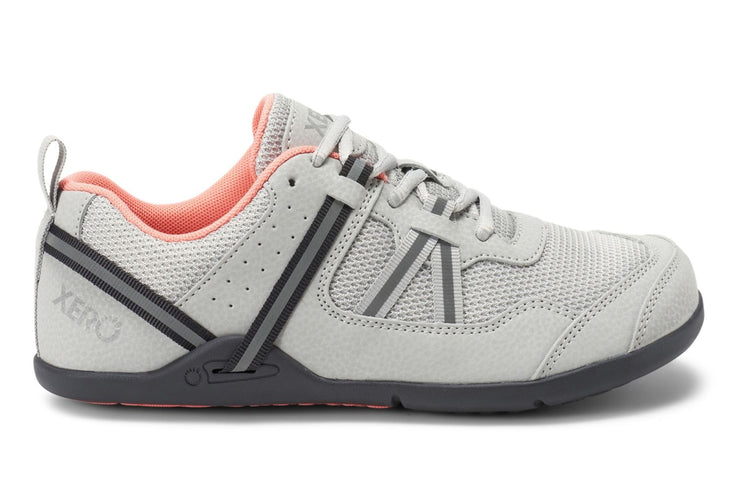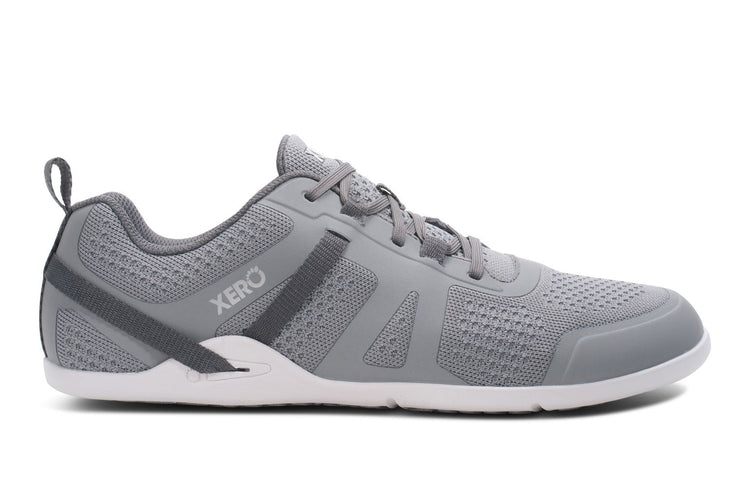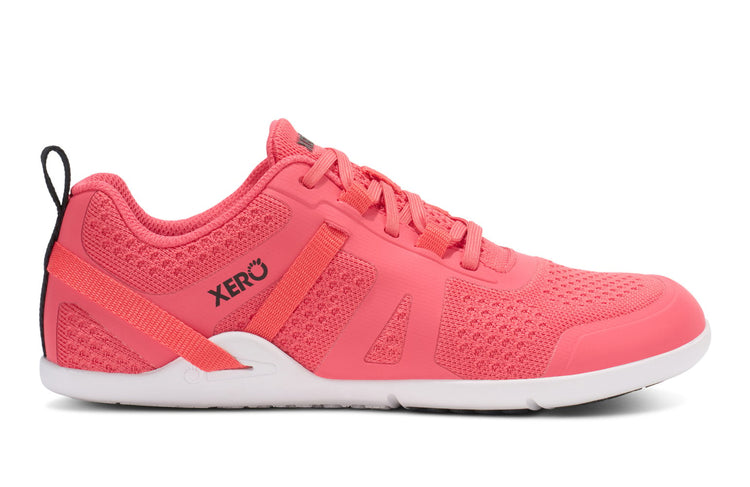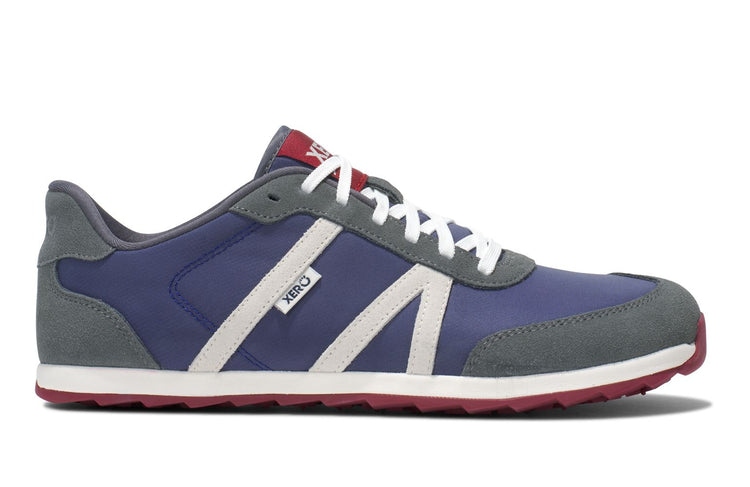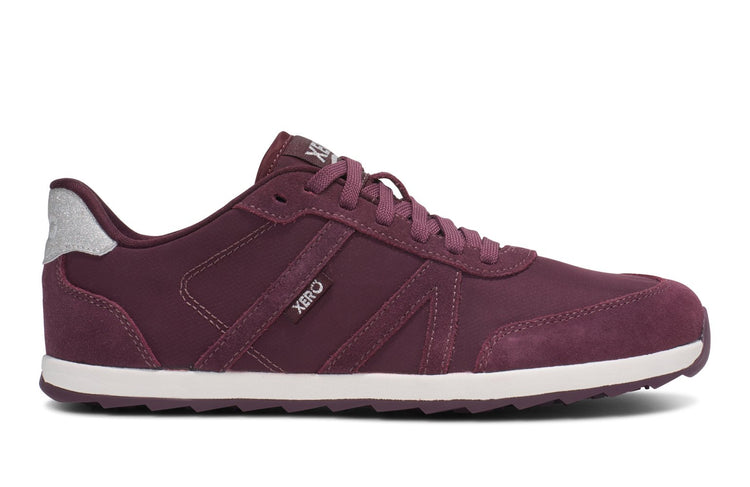You can tie Xero Shoes in lots of different ways, from ultra-minimalist to totally bling-ed out!
Whether you’re using your sandals for barefoot running, hiking, walking, stand-up paddle boarding, or a night on the town, there’s a tying style for you (and, yes, there are 4 guys’ feet and 4 girls’ feet in the picture below 😉 ).

On this page, we’ll show you our favorite tying styles, along with some great ideas from our customers.
We hope you come up with your own variations and send us pictures and videos so we can add them to this page and share them with the world!
The basic tying options:
There are a few variations in tying that you’ll discover on this page. None of these are inherently better or worse than others. It’s really a personal preference, and a style choice, that you’re making when you pick a way to tie your Xero Shoes barefoot sandals. Each tying style uses a combination of the following attributes:
- Thong — Many tying styles have a “thong” or a toe strap, a section of lace that comes up between your first and second toe. This is NOTHING like a flip-flop, though, for a number of reasons. Even people who say, “I don’t like things between my toes” typically don’t mind the thong styles.
- Strap — Some barefoot sandal tying styles mimic other sandals, like the Chaco sandal. These styles require punching a few extra holes in your Xero Shoes, and may require a bit of Shoe Goo to protect the lace that’s exposed to the ground.
- Toe Knot — Some of the toe straps in the thong styles are held to the sole with a knot that’s placed in between the first and second toe, under the sole. Sometimes people worry that this will be uncomfortable. But you almost never feel it: it’s in between your toes, it’s small, and it’s covered by the rubber outsole.
- No-knot — For various reasons, some people prefer a tying style without a knot under the toes. Again, the knot is rarely a problem, but these styles eliminate it.
- Slip-on/off — Some tying styles let you slip the sandal on your foot by just sliding in your toes and flipping the strap over your heel. It takes about a second.
- Lace Up — Other styles require you to wrap the lace around your foot (and sometimes your ankle), each time you put on your sandals.
I’ve listed these as if they’re separate, but they overlap. For example one style below could be a Thong style, Slip on/off, with a Toe Knot, while another Thong style could be a Lace Up with No-knot.
After you lace up your Xero Shoes, there are fun options for decorative tying, as well as adding pendants, charms, beads and other decorations. We’ll show you how to do those, too.
Now let’s take a look at the different tying styles. Click on the images for instructions for each tying style.
Xero Basic
(Thong / Toe Knot / Slip on)
This is the style we use for our Custom-Made Xero Shoes.
Xero Loop
(Thong/ Toe Knot / Slip on)
This is very similar to the Xero Basic, but the loop at the top knot gives you some different decorative options
Ultra-Minimalist Hitch
(Thong / Toe Knot / Slip on)
The simplified version of our Xero Basic, with only one lace going around the foot and ankle and a “double half hitch” to secure it (and an optional half hitch to point the lace toward the toe).
Ultra-Minimalist Fisherman
(Thong / Toe Knot / Slip-on)
Using a “fisherman’s knot” we have another ultra-minimalist tying style. Like the Hitch, there’s only one lace going around your foot.
Uber-Ultra Minimal to the Max
(Thong / Toe Knot / Slip-on)
Using a “Crow Bead” to replace the knot above you’re foot, this may be as minimalist as it gets. Just one lace around your foot, but secure enough for almost anything.
Randy’s Marathon Lacing
(Thong / Toe Knot / Lace Up)
Randy Kreill is one of the Xero Shoes ultra-runners (he does 30+mile races), and he came up with a modified toga-style that he wears on those long, long runs:
Ande’s No-Toe Bling (#1)
(Strap / No Knot / Slip On)
Ande has some fun no-toe, no-knot ideas… here’s her first.
Sonja’s No-Toe
(Strap / No Knot / Slip On)
No toe strap, no knot, and plenty of fun (and, no you don’t need all the extra sole in front of your toes… that’s just what she’s showing in the video).
Erika’s Knot-less Multi-Styles
(Strap / No Knot / Lace Up)
Erika has a BUNCH of great tying ideas in her videos. While you see a strap coming between the toes, it’s not like the normal thong styles.
Kelly’s No-Knot
(Strap / No Knot / Slip On)
You can move the knot to the back of the sandal for a different look, BTW.
Raymond’s Double-Thong
(Thong / No Knot / Slip On)
A double-strap tying style that has no toe knot and is quite comfy.
Amanda’s Chaco Style
(Thong / No Knot / Slip On)
A double-strap tying style that has no toe knot and is quite comfy.
Lee Chase’s “Extra Comfy”
(Strap / Knot / Slip On)
A variation of the style in the photo at the top of this page (3rd from the right).
Kit Raymond’s No-Toes
(Strap / No Knot / Slip On)
A double-strap tying style that has no toe knot and is quite comfy.
Barefoot Pat’s Xero Loop Variation
(Strap / Knot / Slip On)
Pat made this variation in the Xero Loop to better fit his foot shape. He tweaked the angles, locked in the knot, plus there’s a decorative “looper” element, too.
Here are some fun lacing options, basically things to do with the “extra” lace.
Half-ankle
Really this was just something we did at trade shows to get the extra lace out of the way when someone was testing out a pair of sandals. But then we saw others using it full-time! It’s our Xero Basic, with a couple of loops around the ankle. So, loop it around, tie it off (this picture is from the Outdoor Retailer show).

The Phoenix Flower
Our first decorative tying style, developed by the lovely Lena Phoenix, using the Xero Loop as the base.
Tracy’s Rosette
Starting with a Phoenix Flower and adding a twist to make what Tracy calls “Cute Shoes.”

Sylvie’s Petals
I know it’s hard to see this image. I shot it with my camera phone at a barefoot running lecture. Instead of making ONE loop through the slip-knot in the Xero Loop, Sylvie makes 4 of them… and then uses the leftover lace to wrap through and under the loops. The video will help you figure it out.

LOTS more tying styles have been posted, but remember, you can send us your own videos/instructions of whatever you come up with!
Plus, you can decorate your Xero Shoes with pendants, charms, and beads!
Pendants and Charms
Just tie a pendant into the knot on the top of your foot… or put them anywhere else you can think of.
I’ve run with pendants on my shoes and not noticed them.
Bead Basics
In short, if you can fit a bead over the lace, go for it.
Put them on the toe strap, one of the ankle straps, on the “extra” lace… wherever you can fit one. And then combine knots and beads.
Here are some examples with beads to get you started.

















